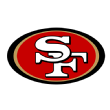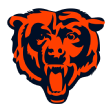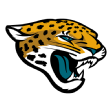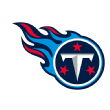How would the 2017 NFL draft have looked if teams knew then what they know now? How long would Deshaun Watson last? Would the Bears still pick Mitchell Trubisky to be their quarterback of the future? How early would Marshon Lattimore go?
With the regular season in the rearview mirror, our panel of NFL Insiders took a crack at re-drafting the first five picks of last year's draft class. The panel included Matt Bowen, Mike Sando, Aaron Schatz, Kevin Seifert and Field Yates.
As a reminder, the actual top five of last year's draft went as follows:
1. Browns: Myles Garrett, DE, Texas A&M
2. Bears: Mitchell Trubisky, QB, North Carolina
3. 49ers: Solomon Thomas, DE, Stanford
4. Jaguars: Leonard Fournette, RB, LSU
5. Titans: Corey Davis, WR, Western Michigan
Note: For the purpose of this re-draft, we reverted to the original 2017 draft order, before Chicago traded up to take Trubisky at No. 2. Cleveland held the first pick, followed by San Francisco, Chicago, Jacksonville and Tennessee.

1. Cleveland Browns: QB Deshaun Watson
Bowen: Defensive end Myles Garrett has the traits to become a star pass-rusher in the league, but Cleveland's inability to hit on the quarterback position has consistently hindered the development of the entire franchise. That's why I'm going with Watson here. From the high-level intangibles he brings onto the field to the dual-threat talent with which he attacks opposing defenses, Watson is a perfect fit for today's NFL game and an answer to Cleveland's long search for a leader at the position.
If we look back at Watson's tape from 2017, and his 19 touchdowns in seven games before injuring his knee in practice, his ability to run a modern offense pairs with Hue Jackson's philosophy. It's the movement passes, the quick game, the shot throws off play-action and the RPOs (run-pass option) -- with some QB runs sprinkled in. Play fast, open up throwing windows and use movement to dictate tempo from an offensive perspective.
With Watson in the mix, the Browns would most likely not be picking No. 1 overall again in the 2018 draft, and they also wouldn't have added the No. 4 overall pick, which the Texans gave up last year in trading up for Watson. But if Cleveland had solidified its QB position last April, the Browns could have focused on building a winning culture around Watson, Josh Gordon and a solid offensive front this offseason. Instead, they're still looking for their quarterback of the future.

2. San Francisco 49ers: DE Myles Garrett
Sando: Knowing the 49ers were able to land Jimmy Garoppolo from New England for a second-round choice made it easier -- more defensible, at least -- to bypass a quarterback in this re-draft. It's not just me saying they might be able to find a QB another way. We all know they did exactly that, even though they could not have known how things would shake out when they traded back from the second overall spot on Day 1 of the 2017 draft.
Garrett was one of the most talented players in the class. Selecting him did not require much justification. He was there; I took him. Alvin Kamara and Marshon Lattimore were the other players from the draft who stood out in my mind as alternatives. The 49ers already have a good running back, and they're running a system that has succeeded in the past with quite a few backs with varied pedigrees. Lattimore's injury history was still a slight concern in my mind, even though he played more games than Garrett did this past season.

3. Chicago Bears: QB Mitchell Trubisky
Yates: Quarterback play is the function of player ability, coaching and circumstances. Immediate success is not entirely uncommon -- Dak Prescott was an MVP candidate as a rookie in 2016 -- but it should also not be the barometer to measure a quarterback after just one season in the NFL.
After all, Chicago drafted Trubisky with the intention of redshirting him, a plan that went awry because of the performance of Mike Glennon.
When reviewing Trubisky's rookie campaign, particularly when bypassing other players such as Lattimore with this pick, it's important to analyze beyond what the numbers -- 2,193 yards, seven touchdowns and seven interceptions with a 59.4 percent completion percentage -- tell us about him. Trubisky played within an offense whose top wide receiver for much of his time as the starter was either Dontrelle Inman, cast off by the Chargers for a late conditional draft pick, or Kendall Wright, who signed a one-year deal after not fully meeting expectations in Tennessee.
When the Bears hired Matt Nagy as their new head coach this offseason, a prevailing narrative was that the team aspires to recreate a Sean McVay-Jared Goff dynamic with Nagy and Trubisky. That isn't a certainty to happen given how expediently McVay and Goff found success, but if the Bears passed on Trubisky in this spot, the team would have had -- and still have -- a massive quarterback quandary.
Banking on player development via a strong coaching staff that would be in place for Trubisky's second year plus the undeniable talent he brings to the table, he remains the pick at No. 3 overall.

4. Jacksonville Jaguars: QB Patrick Mahomes II
Schatz: After a 10-6 playoff season, I'm sure the Jaguars still feel good about their selection of Leonard Fournette. But I'm a strong believer that you don't take a running back this high in the draft -- especially one who won't even average 4 yards per carry as a rookie. Kamara was the best rookie running back, but he doesn't really fit the power style the Jaguars want from their lead back, so he wouldn't make sense here either.
The Jaguars are so imbalanced that it seems absurd to suggest they needed a defensive player with the No. 4 pick. Lattimore or Tre'Davious White would be fantastic additions to most teams, but Jacksonville already has two outstanding outside corners (Jalen Ramsey and A.J. Bouye) and a reasonable nickelback (Aaron Colvin).
No, the Jaguars need to be honest with themselves about their need at the most important position in the game: quarterback. Yes, Blake Bortles ranked 12th in ESPN's Total QBR metric this season, but that was his best career finish by far, and the positive performance was grouped into a handful of games. Overall, Bortles was the least consistent quarterback in the league.
He has four years of experience now. It's probably never going to get better than this. The Jaguars need to find a quarterback who can carry the team even on days the defense doesn't have a stellar performance. And a team that wants to build on defense and running the ball needs a quarterback with a big arm who can take advantage of the play-action opportunities deep. So, say hello to Mahomes, who in our re-draft world is now the heir apparent to Bortles in Jacksonville instead of Alex Smith in Kansas City. Mahomes was the highest-rated quarterback last year in Football Outsiders' QBASE projections, and the success of Goff and Case Keenum in 2017 means less reticence about drafting a quarterback out of an Air Raid college system.

5. Tennessee Titans: CB Marshon Lattimore
Seifert: The Titans entered the draft with two first-round picks, along with clear needs at receiver and defensive back. They chose receiver Corey Davis at No. 5 and cornerback Adoree' Jackson at No. 18.
Davis proved to be a promising -- if late-developing -- prospect. Jackson had a solid rookie year. But it's now clear that Lattimore is a special player, one who earned Pro Bowl honors and was one of the NFL's top cornerbacks by the end of the season.
In this version, the Titans get the best cover man in the draft at No. 5 and then sift through the remaining receivers at No. 18 or beyond -- such as JuJu Smith-Schuster or Cooper Kupp, who weren't drafted until the second and third rounds, respectively.
